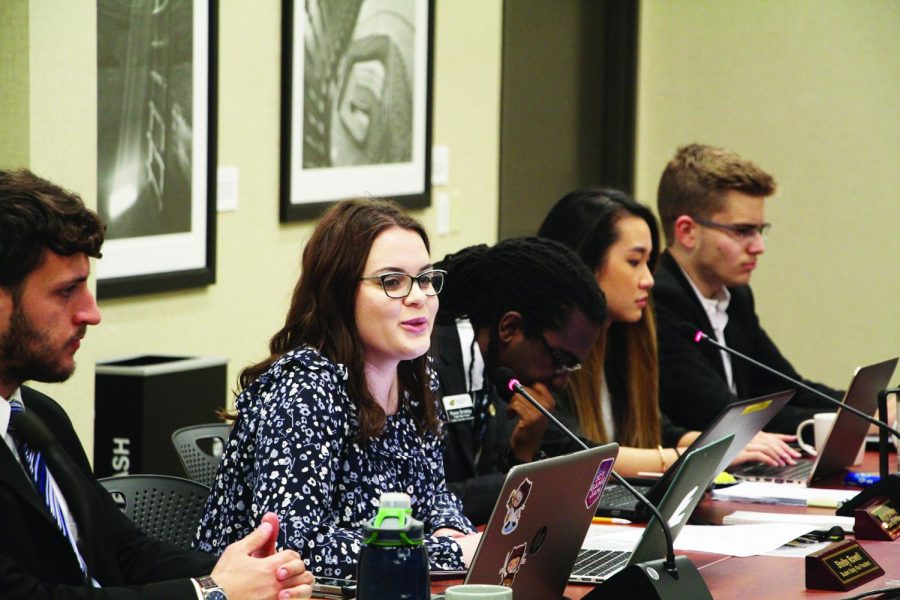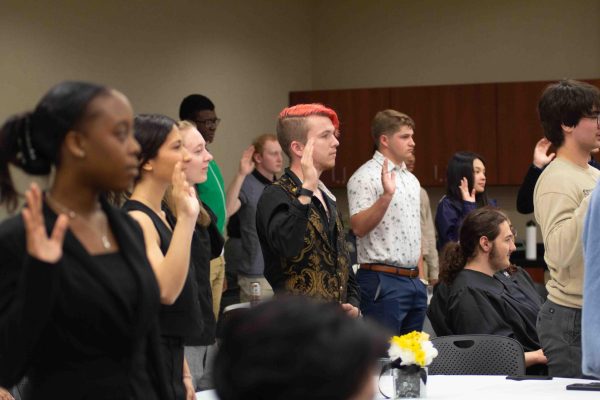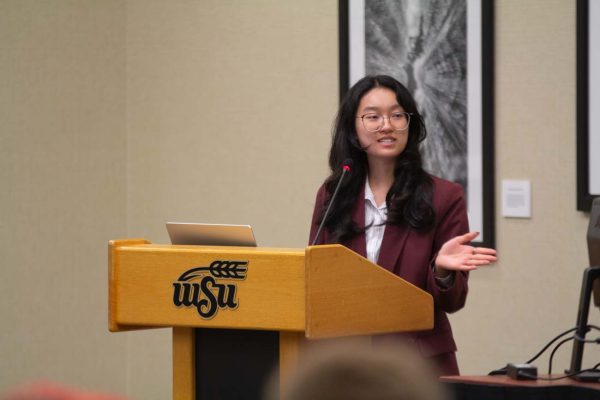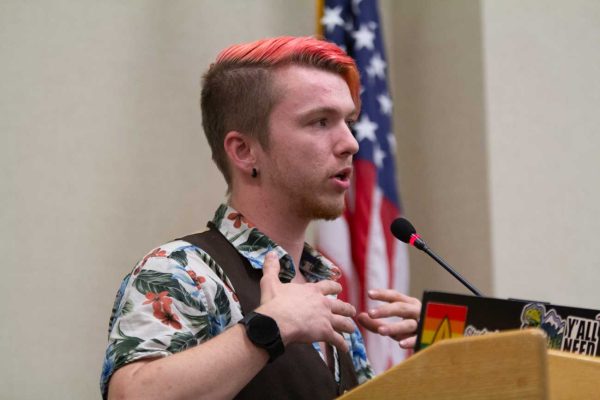Live captions to accompany SGA meeting livestream
Student Body Vice President Shelby Rowell speaks during the Sept. 25 SGA meeting, where $5,000 were allocated for two livestreaming cameras. The cameras allow for repositioning and zooming by remote. (File photo)
The Student Government Association will use a live-captioning service in its endeavor to livestream senate meetings to be compliant with the Americans with Disabilities Act.
Grady Landrum, director of the office of disability services, said that unlike an interpreter, captions can make video content more accessible for people who don’t know sign language, like the hard-of-hearing or newly deaf.
Student Body President Kenon Brinkley said SGA made the decision between an interpreter and live-captioning based on which was more compliant with ADA.
“Live-captioning wasn’t the easiest option to come to, but it seemed like, Grady [Landrum] was telling us that would be the most compliant,” Brinkley said.
In September, SGA allocated $5,000 to pay for two wall-mounted PTZ (position-tilt-zoom) cameras. The PTZ label indicates that the cameras can be repositioned and zoomed by remote.
David Kidd, director of information technology for the Rhatigan Student Center, said the cameras will be positioned in a way that allows for the widest coverage of the Santa Fe Room, with one in the front and one in the back.
“Our plan is to kind of mock set them up, look and see what the view looks like, so we can maximize how many people we can see or the area we can cover to determine where they will be mounted,” Kidd said.
The overall cost of the livestreaming project comes to about $17,500, including the cameras, switching equipment, streaming equipment, and installation. Potential maintenance on the equipment will be covered through the RSC’s repair fund.
Livestreaming is a multi-faceted operation that isn’t as simple as recording video on your phone, Kidd explained.
A video switcher will be used to connect both cameras — enabling SGA to alternate which camera’s view is displayed, or to use a split-screen feature.
A separate hardware component will share the video source with a captioning service, which will then caption the video and upload the captions to a streaming platform. SGA has not decided whether it will use Facebook, YouTube, or both platforms.
Installation is expected to take two days, although an official installation date has not yet been set. Kidd said that, based on when the equipment was ordered, it will not arrive until at least the end of October.
In addition, SGA will look into hiring someone to manage the technical equipment that goes along with the livestreaming process.
“In this session, our conversation has been more into understanding the complexities that go into making sure we do [the livestream] right,” said SGA Co-Adviser Gabriel Fonseca, assistant director of student life. “If we’re going to do it, let’s do it right.”
Fonseca said SGA is considering either an internship, co-op opportunity, or student assistantship wherein the student assistant’s sole job would be to manage the livestream.
It is unclear when the livestream project will be finished, but Fonseca said SGA will use the equipment as soon as it is ready and hopes to start livestreaming by next semester.

Daniel Caudill is the former editor in chief for The Sunflower. A staffer at the paper since 2017, Caudill first covered Student Government Association...












